Side yards can be a landscaping challenge because of tight spaces and less than glamorous fences, which are more utilitarian than easy on the eyes.
This past week, I finally decided to tackle a section of my side yard that was a bit of an eyesore. Here’s how I transformed it into the photo you see above.
My first challenge was that initially, I had thought a concrete path decorated with a container garden would do the trick. However, after several years, and many failed attempts at housing large lush plants in pots (most were I am sure afflicted with root bound) in an attempt to soften the redwood fence, I decided more drastic measures were in order.
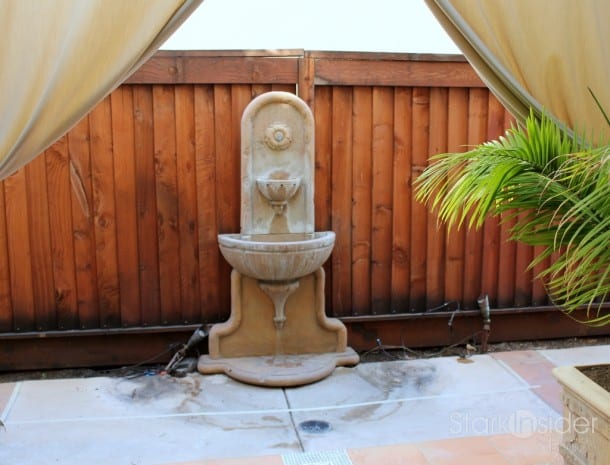
I had a contractor cut a section of the concrete path I had previously put in so that I could design a lush garden against the fence. This section of the wall faces into a courtyard which the rest of the home wraps around, so there are several large windows which could benefit from a more interesting view.
Here is what the courtyard looked like before the installation of the garden. The only component I thought was worth keeping was the wall fountain which provides a relaxing ambiance with the sound of flowing water. I put some tape down to mark where I wanted the concrete cut. In the end, I had to make the garden area larger since the contractors found drain pipes that would be challenging to relocate exactly below where I wanted to plant 2 trees. Alas, more concrete had to be cut so that the trees could be placed a good distance from the pipes. Pipes and roots don’t mingle very well I hear!
Focal Point: Because a small garden is…small, make sure to have a strong focal point. This can be an ornamental tree, or in my case, a fountain. Having a strong focal point will anchor your small garden and make it feel like it has purpose. Not just an afterthought.
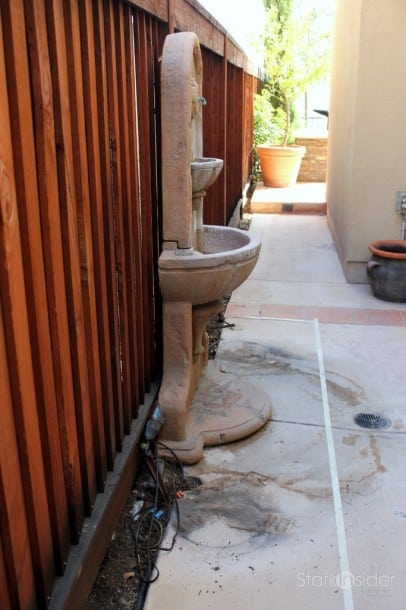
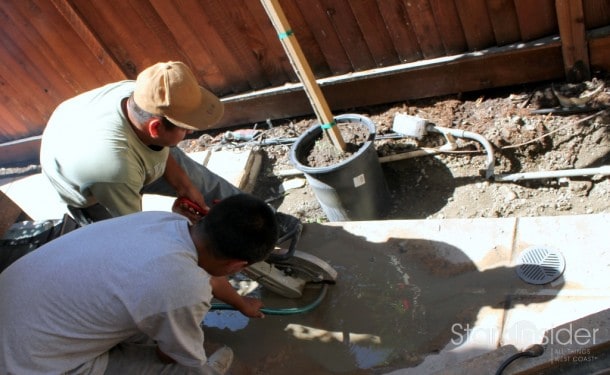
After the concrete area was cut out, about 8 inches of clay soil and rocks were removed so that plants could grow a little easier in the area.
In terms of plant selection, I decided to create a symmetrical garden.
The wall will be covered in a trellis of Star Jasmine (Trachelospermum jasminoides). Right now, it only reaches half way up the fence. I will need to build 2 trellises that span the entire height of the fence and over time the Star Jasmine will cover the entire area surrounding the fountain.
An additional element of height in this garden are two Carolina cherry laurels (Prunus caroliniana). These trees also come in a shrub form and can grow to about 15-36 feet in height. They are evergreen (won’t drop all their leaves in winter), relatively clean trees with white, creamy flowers that appear from February to April. I thought these would in time provide nice privacy from the second floor windows that overlook the courtyard. Oh, and they look great as well!
Vary heights: For small gardens, it is important to introduce plants that will grow to varying heights and layer from tallest in the back to lower ones in the front. One exception is with trees since the trunk is slimmer and doesn’t hide elements behind it which are lower. You have some flexibility on where you place trees that have clean trunks.
In order to add a pop of color to my otherwise very “green” selection of plants, I choose the Hebe Variegata. It has been a recent discovery for me and this shrub seems so perfect, I am waiting to discover something nasty about it. Firstly, it’s an evergreen which means in the winter it will not look dead. Secondly, it has really bright yellow and green leaves which will brighten any spot in the garden. The shrub grows to about 3-4 feet if left alone. Thirdly, to really seal the deal, it has very showy lavender/violet flowers that can span from late spring to mid summer. Finally, it is attractive to bees, butterflies and birds. In this situation, I am planting them in ground, but they also do well in a container. If you know of a reason why this is not a perfect plant, please let me know before I plant it everywhere.
Color selection. For small gardens, you want to limit the color palette so that the garden has continuity and doesn’t feel disorienting. I decided to go with a contrasting palette of purple and yellow.

Because of the compact space, I decided to surround the garden with a Munstead Lavender (Lavandula angustifolias) border. I love the smell of Lavender and just recently made a batch of Lavender oil (Spa Retreat: How to make lavender oil). The Munstead Lavender is a type of English Lavender which only grows to about 18 inches. This is nice when you have tight spaces and also since I am building this garden in layers, it will be in front of the Hebe Variegata which will allow for the Hebe Variagata to show off as well.
Slow growing or frequent maintenance. Plant growth will be very noticeable in a small garden so either pick plants which will grow slow or only grow to the size you want them or expect to perform more frequent maintenance. The good news on the latter option is that in a small garden, it doesn’t take too long.
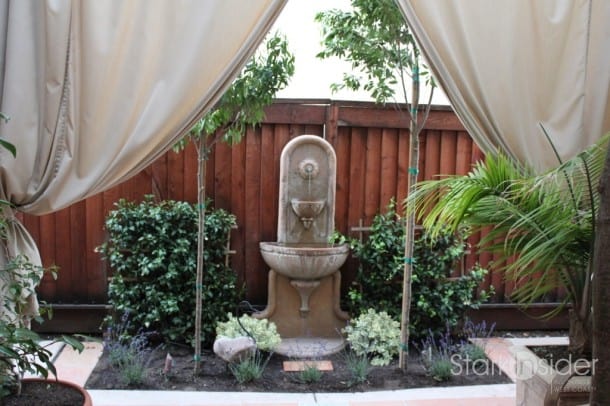

Finally, I placed a 6″x12″ terracotta tile at the base of the fountain so that the fountain can be accessed for cleaning and maintenance.
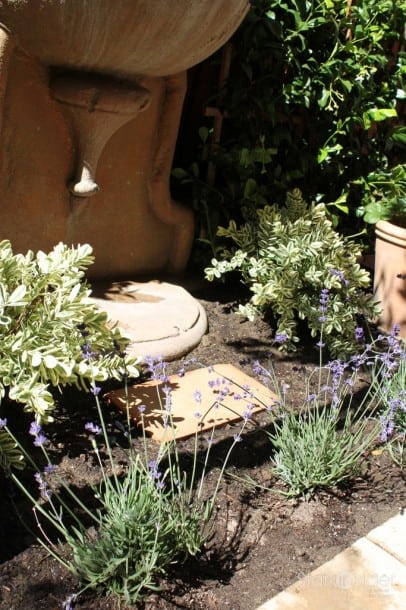
There are still a couple of finishing touches but I wanted to share with you the progress on my latest gardening project.


